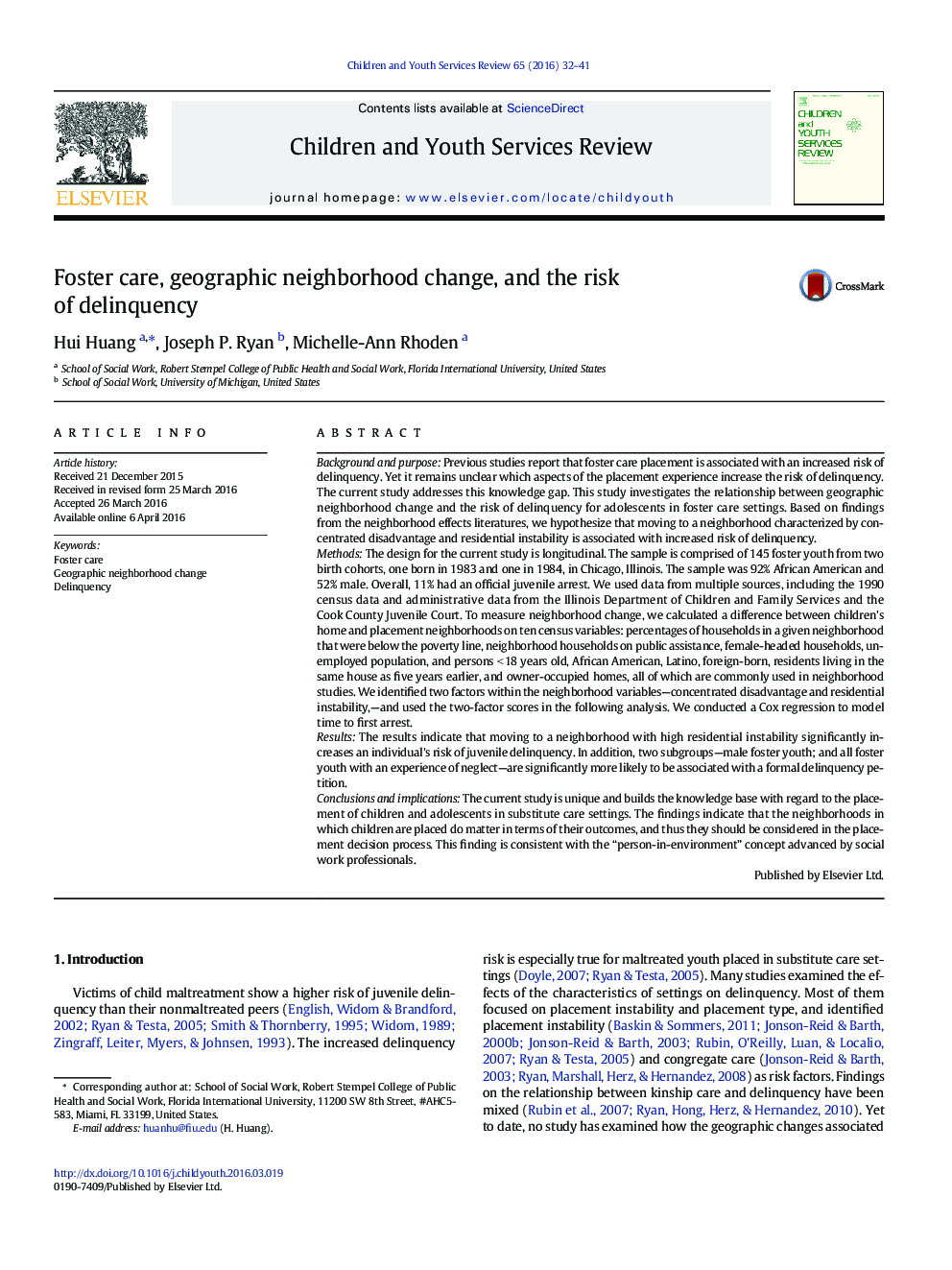| کد مقاله | کد نشریه | سال انتشار | مقاله انگلیسی | نسخه تمام متن |
|---|---|---|---|---|
| 345804 | 617768 | 2016 | 10 صفحه PDF | دانلود رایگان |
• Study association between geographic neighborhood change & delinquency in placement
• Moving to a neighborhood with high residential instability increases delinquency.
• Male foster youth and an experience of neglect are more likely to be delinquent.
Background and purposePrevious studies report that foster care placement is associated with an increased risk of delinquency. Yet it remains unclear which aspects of the placement experience increase the risk of delinquency. The current study addresses this knowledge gap. This study investigates the relationship between geographic neighborhood change and the risk of delinquency for adolescents in foster care settings. Based on findings from the neighborhood effects literatures, we hypothesize that moving to a neighborhood characterized by concentrated disadvantage and residential instability is associated with increased risk of delinquency.MethodsThe design for the current study is longitudinal. The sample is comprised of 145 foster youth from two birth cohorts, one born in 1983 and one in 1984, in Chicago, Illinois. The sample was 92% African American and 52% male. Overall, 11% had an official juvenile arrest. We used data from multiple sources, including the 1990 census data and administrative data from the Illinois Department of Children and Family Services and the Cook County Juvenile Court. To measure neighborhood change, we calculated a difference between children's home and placement neighborhoods on ten census variables: percentages of households in a given neighborhood that were below the poverty line, neighborhood households on public assistance, female-headed households, unemployed population, and persons < 18 years old, African American, Latino, foreign-born, residents living in the same house as five years earlier, and owner-occupied homes, all of which are commonly used in neighborhood studies. We identified two factors within the neighborhood variables—concentrated disadvantage and residential instability,—and used the two-factor scores in the following analysis. We conducted a Cox regression to model time to first arrest.ResultsThe results indicate that moving to a neighborhood with high residential instability significantly increases an individual's risk of juvenile delinquency. In addition, two subgroups—male foster youth; and all foster youth with an experience of neglect—are significantly more likely to be associated with a formal delinquency petition.Conclusions and implicationsThe current study is unique and builds the knowledge base with regard to the placement of children and adolescents in substitute care settings. The findings indicate that the neighborhoods in which children are placed do matter in terms of their outcomes, and thus they should be considered in the placement decision process. This finding is consistent with the “person-in-environment” concept advanced by social work professionals.
Journal: Children and Youth Services Review - Volume 65, June 2016, Pages 32–41
